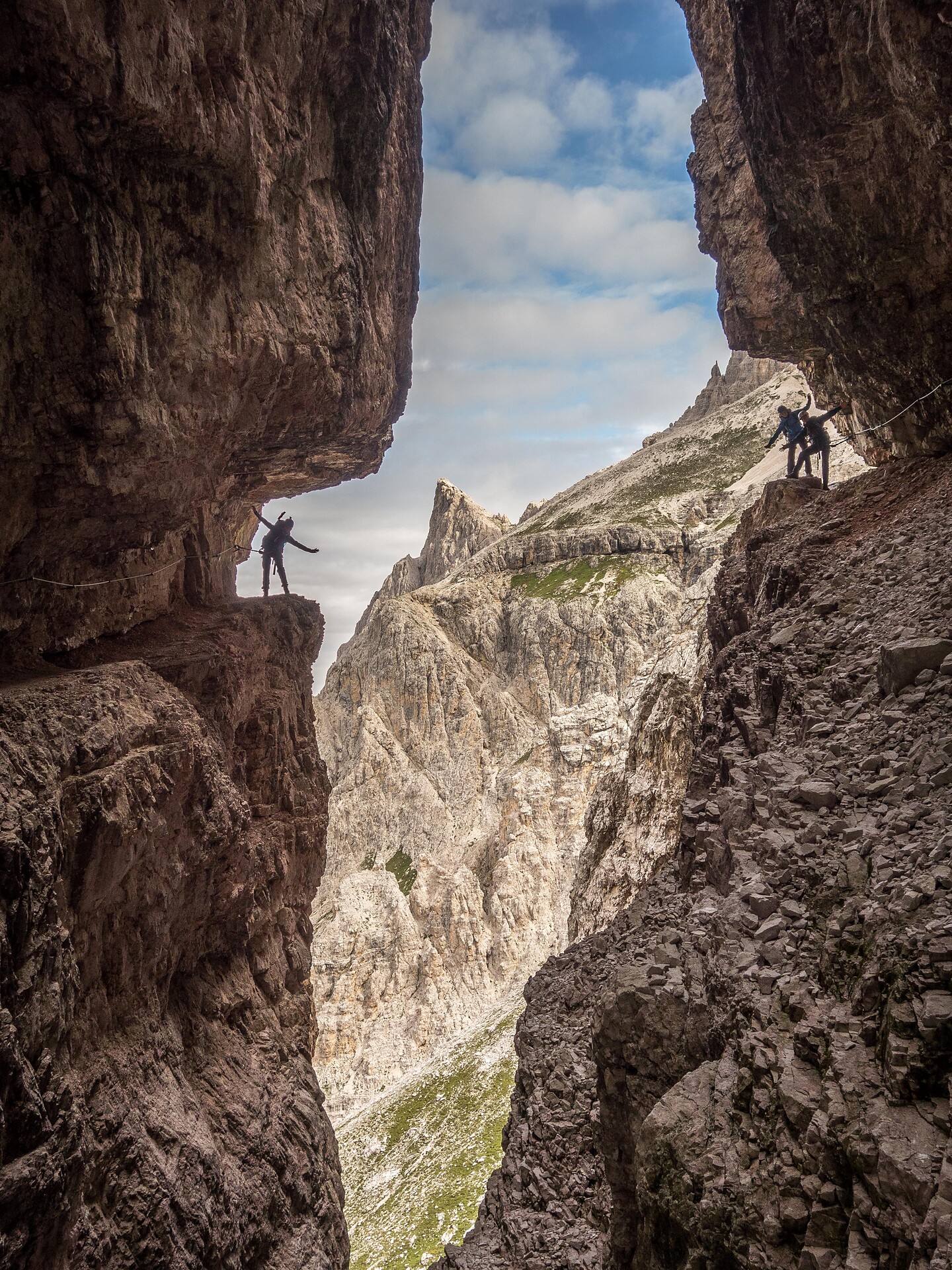Water is, without doubt, one of the most important natural elements in the Texel Group Nature Park. It runs off nearby glaciers and bubbles up from deep underground springs to fill many crystal-clear streams and lakes. The Partschins waterfall is one of the most impressive falls in the Alpine region.
The thundering water shoots out over a towering rock wall and thunders, rages and roars downwards like a "liquid curtain”. The sun’s rays shine on the drops of water making a fascinating myriad of rainbow colours. The 97 mt. high falls are at their best from May to July, when they swell with melted snow water, or after heavy rain storms (water capacity 4,000 – 10,000 per second). Water in all its mighty, majestic forms – the Partschins waterfall is an absolute must, especially around the end of March to the beginning of April when the snow starts to melt and the falls reach a 50 to 60 lt. per second capacity, at the end of April with an average 100 to 200 lt. per second or the end of May with records of between 350 to 500 lt. per second.
The falls reach their full weight with melted snow from mid-May to the end of June or beginning of July with 5,000 to 6,000 lt. of water crashing over them. The most impressive sight of all was seen in July 1989 when an estimated 10,000 lt. per second went hurtling its way towards the valley.
Alpine Health: The high level of humidity found at the waterfall has an extremely beneficial, refreshing and re-vitalising effect on our body, helps improve the circulation of air in our lungs and boosts our immune system. The “WATERFALL CURE” is recommended as a means of combatting the effects of air pollution as well as for itscleansing action on the breathing mucous membranes. The Partschins waterfall is known to have an exceptionally high concentration of so-called oxygen-ions, estimated at an incredible figure of 50,000 per sq: cm. These particular oxygen-ions are present in our homes as 100 ions pro cm³, 200 ions in town and city air, and 5,000 in mountain and seaside regions. You can either walk up to the bottom of the Partschins waterfall from the village centre in about 1,5 hoursor take the bus line 265. A well-marked, safe path then leads up to a viewing platform with a fantastic panorama out over the nearby valley and imposing mountain peaks.
The Partschins waterfall is fed by various side streams and other smaller falls all along its 8km. journey on through a steep gorge. The watershed of the Texel Nature Park, which is completely encircled by the Merano High Path, totals some 25 sq. km. and includes the highest peak of the Partschins/Parcines area, the Roteck peak at 3,337 mt.
The falls are most swollen at about 20.00 by which time the run-off water from various mountain streams and little lakes, which takes five hours to reach the main stream, has found its way to the waterfall. The water volume decreases during the night.


















































































